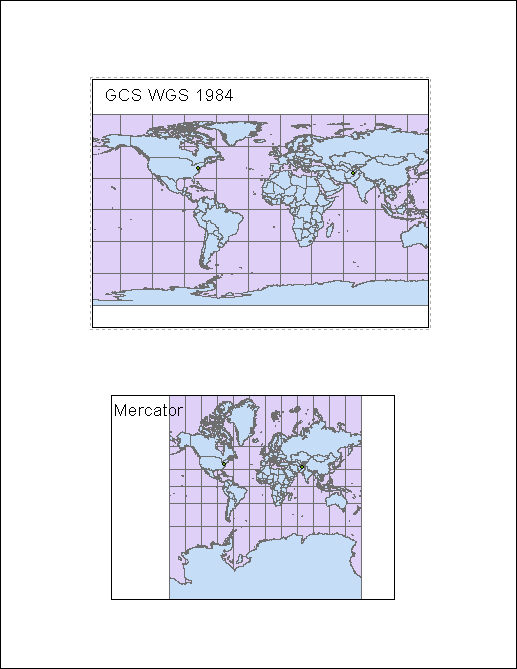Different map projections can have
certain benefits and disadvantages. Three types of map projections were
represented in the current assignment – equal area, equidistant and conformal.
As the name suggests, equal area maps preserve areas of features. To preserve
areas, “other properties—shape, angle, and scale—are distorted” (arcgis.com).
Equidistant maps preserve the distances between different points. The drawback
of equidistant maps is that scale cannot be preserved throughout the entire
map. Lastly, conformal map projections are designed to preserve a local shape.
As described on arcgis.com, “To preserve individual angles describing the
spatial relationships, a conformal projection must show the perpendicular
graticule lines intersecting at 90-degree angles on the map. A map projection
accomplishes this by maintaining all angles. The drawback is that the area
enclosed by a series of arcs may be greatly distorted in the process.”
Experimenting with various map
projections in ArcMap made the benefits and disadvantages of map projections
readily apparent. To project a three dimensional object – namely Earth – onto a
two dimensional medium certain distortions must take place. Different
projections are designed to mitigate particular distortions. Yet, the
mitigation of a particular distortion results in the exacerbation of another
distortion. For example, the Mercator projection is designed for little
distortion of shape near the equator. To provide the lower distortions near the
equator, greater distortions are evident near the poles. This can be recognized
on a Mercator projection of the globe. Antarctica appears to be much larger
than it is in actuality.
The distortions that arise with map
projection are inevitable. As previously noted certain distortions can be
exacerbated in map projections. Conversely, certain distortions are lessened
for a variety of purposes. For instance the equidistant conic projection
defines two standard parallels that feature no distortion. If areas along these
parallels were of interest, this type of map projection would be suitable. This
is just one example of the mitigation of distortions. The complete description
of distortions is not the intent of this paper.
Evidently, no one map can be
described as the greatest overall. Certain projections work best for certain
situations. The numerous types of map projections each represent a set of
distortions – some of which are great and others that are lessened. The six
projections illustrate in the previous example provide additional insight into
map distortions. The six projections provided early are: GCS WGS 1984,
Mercator, Equidistant Conical, Equidistant Cylindrical, Berhmann, and
Cylindrical Equal Area.
Works
Cited
"ArcGIS Help 10.1." ArcGIS Help 10.1. N.p., n.d.
Web. 27 Jan. 2015.









